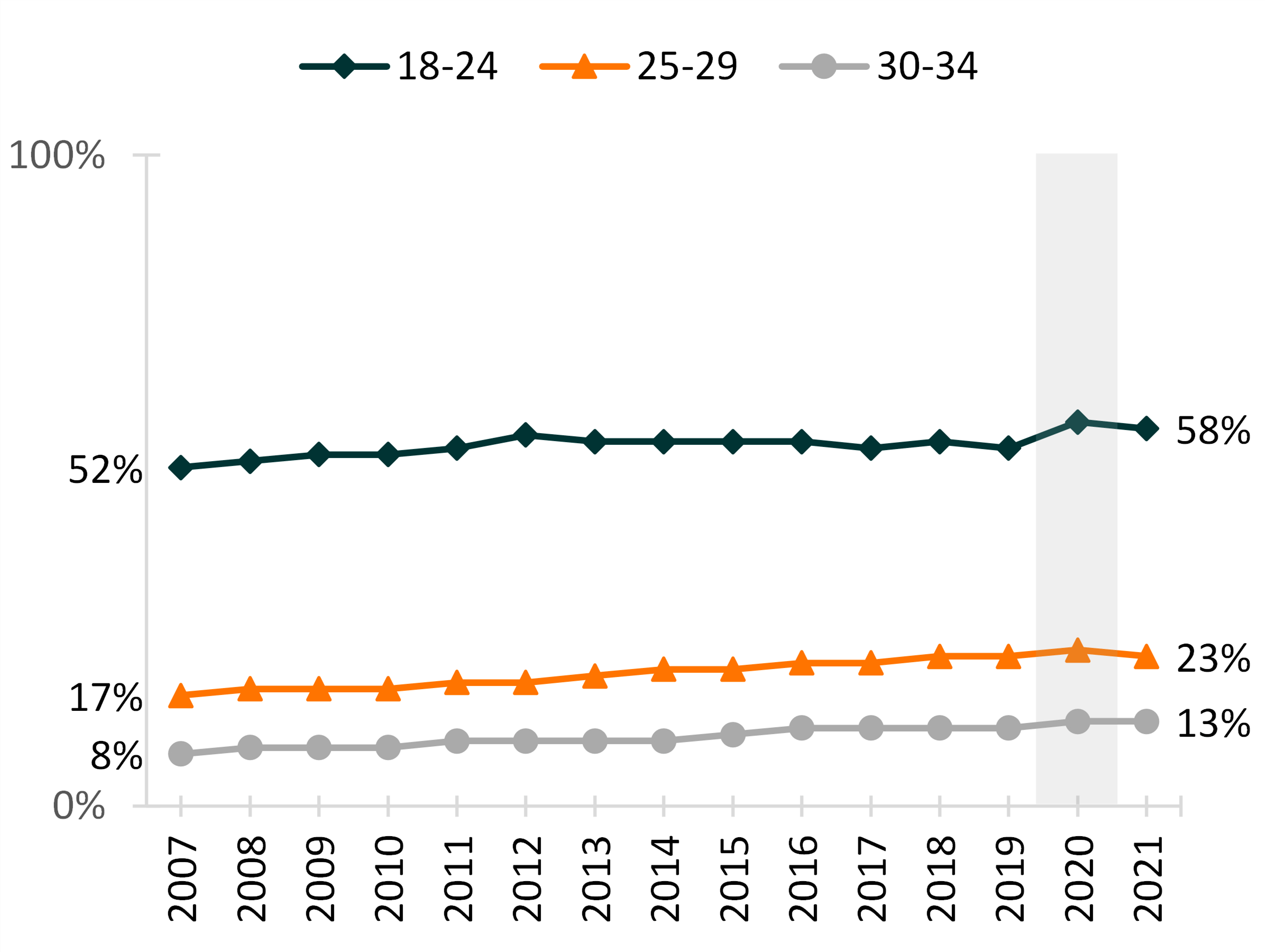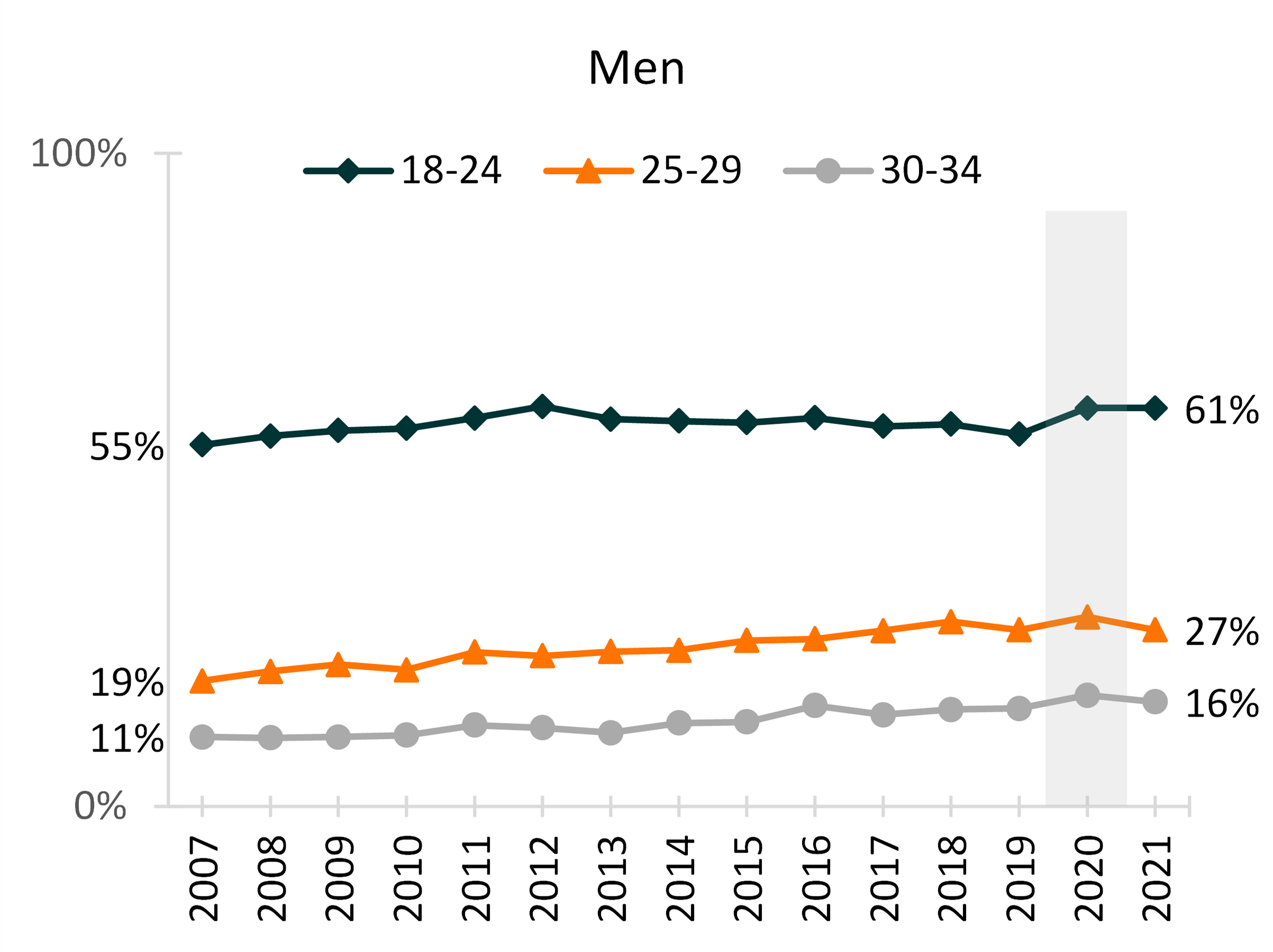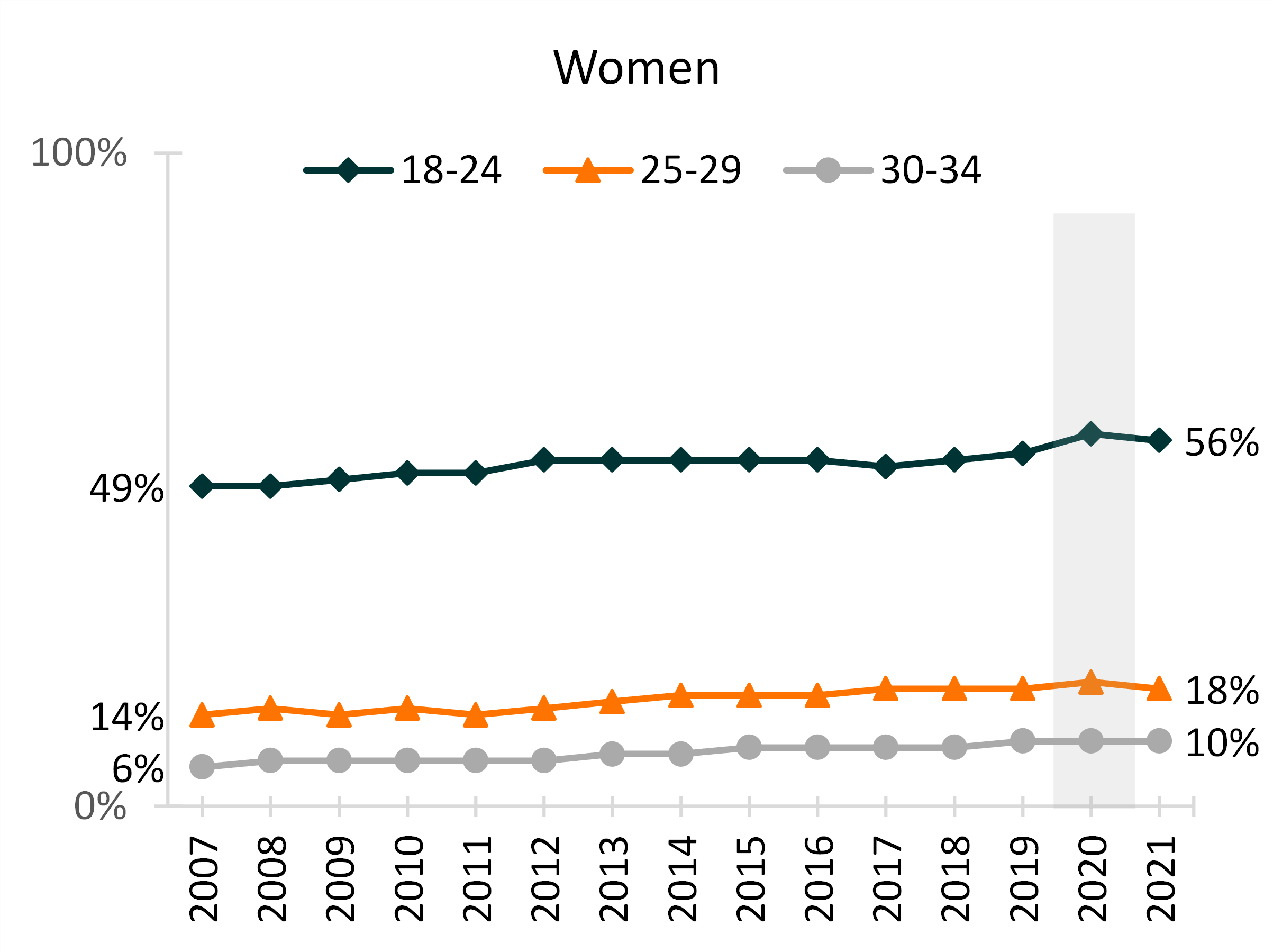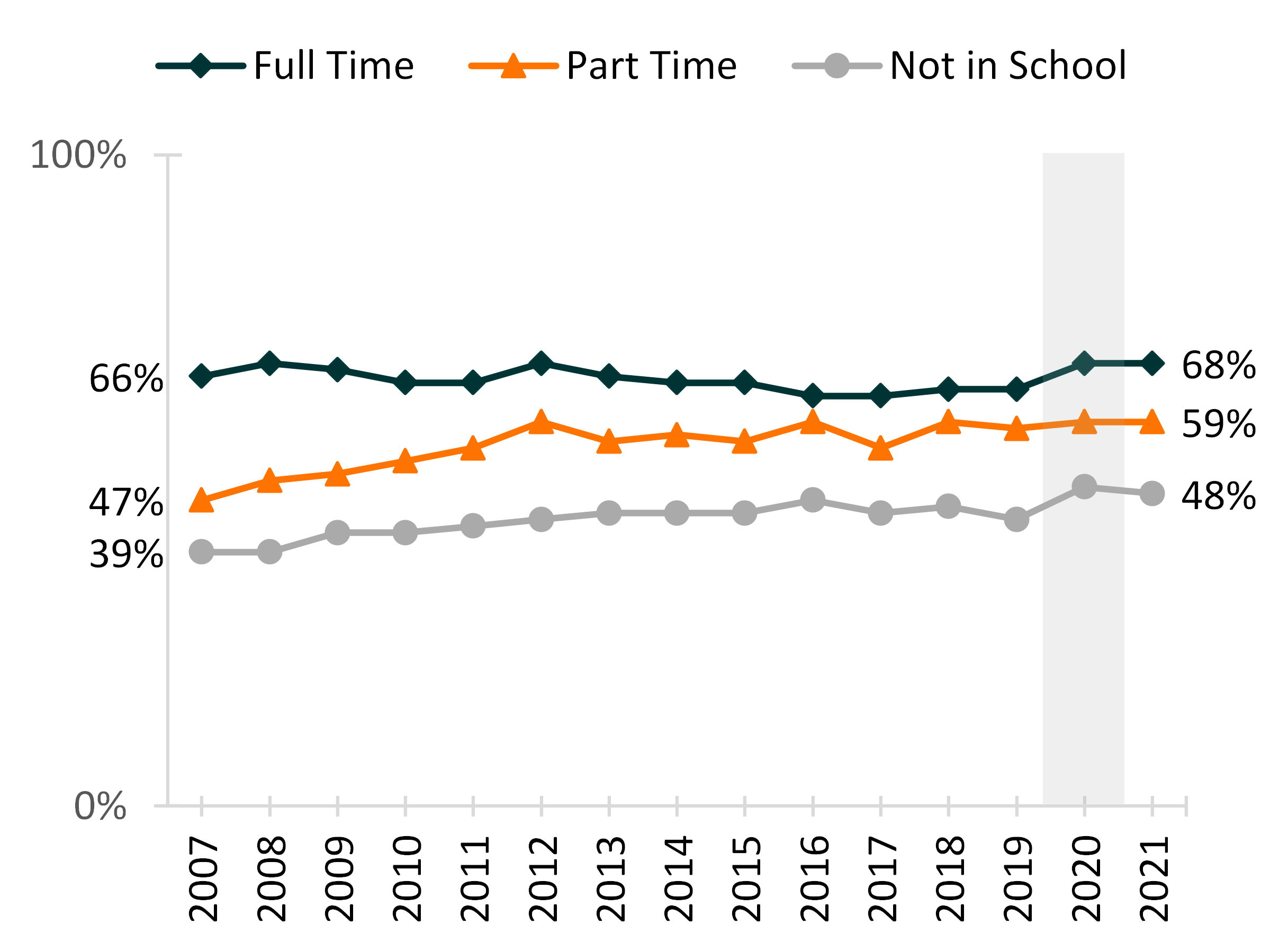Young Adults in the Parental Home, 2007-2021
Family Profile No. 23, 2021
Author: Adrianne R. Brown
There are a number of reasons young adults live with their parents, including mental health, finances (Sandberg-Thoma et al., 2015), family connectivity, characteristics of the parental home, and physical health of parents (South & Lei, 2015). Patterns of parental co-residence vary by age, gender, and school enrollment. Using the Current Population Survey (CPS), we produce an update on young adults’ parental co-residence by age, gender, and school enrollment from 2007 through 2021. This update provides a glimpse into the residential patterns of young adults at time points associated with the beginning of and nearly one year into the COVID-19 pandemic (shown by the gray shading in the figures). We define parental co-residence as living with one’s own parent(s) or a partner/spouse’s parent(s). This family profile updates previous profiles on parental co-residence using recent data (FP-19-04, FP-16-16, and FP-12-22).
Share of Young Adults Living in the Parental Home by Age Group
- In 2021, 34% of young adults aged 18-34 were living in the parental home, up from 29% in 2007 (not shown).
- Between 2007 and 2021, the share of young adults co-residing with parents increased across all age groups, although the prevalence and pattern of parental co-residence varied.
- Those in the youngest age group, had the largest share living in a parent’s home. After remaining relatively stable for eight-years, this share increased from 55% to 59% between 2019 and 2020. This was the largest observed annual increase across all age groups during the period examined. The share has since declined to 58% in 2021 but remained higher than observed in 2019.
- In 2021, nearly a quarter (23%) of young adults aged 25-29 were living in the parental home, up from 17% in 2007.
- The share of young adults co-residing with parents in the oldest age group, 30-34, gradually increased from 8% to 13% between 2007 and 2021.
Figure 1. Share of Young Adults Living in the Parental Home by Age Group, 2007-2021

Source: NCFMR analyses of IPUMS-CPS, 2007-2021, University of Minnesota
Share of Young Adults Living in the Parental Home by Gender and Age Group
- The share of young adults co-residing with a parent was highest among those at younger ages regardless of gender.
- In 2021, 61% of men 18-24 years-old and 56% of women 18-24 years-old were living in a parent’s home compared to 16% of men 30-34 years-old and 10% of women 30-34 years-old.
- Parental co-residence increased for both young adult men and women across all age groups.
- Between 2007 and 2021, men aged 25-29 experienced the greatest absolute increase, from 19% to 27%.
- Parental co-residence was higher for young adult men than for young adult women across all age groups.
- In 2021, the largest difference between men and women was among those aged 25-29 (27% vs. 18%, respectively).
Figure 2. Share of Young Adults Living in the Parental Home by Gender and Age Group, 2007-2021


Source: NCFMR analyses of IPUMS-CPS, 2007-2021, University of Minnesota
Share of Young Adults Aged 18-24 Living in the Parental Home by School Enrollment
- A greater share of young adults aged 18-24 enrolled in college full time co-resided with parents than those enrolled part time or not enrolled throughout the time period.
- Parental co-residence among those enrolled in college full time remained relatively constant (between 65% and 68%) between 2007 and 2021.
- Parental co-residence among those enrolled in college part time increased from 47% in 2007 to 59% in 2021.
- Parental co-residence among those not enrolled in school increased from 39% in 2007 to 48% in 2021.
Figure 3. Share of Young Adults Aged 18-24 Living in the Parental Home by School Enrollment, 2007-2021

Source: NCFMR analyses of IPUMS-CPS, 2007-2021, University of Minnesota
The NCFMR has many Family Profiles featuring the topic of young adulthood. For a complete list, please visit our Young Adulthood topic page at:
https://www.bgsu.edu/ncfmr/resources/data/resources-by-topic/emerging-adulthood.html
Data Sources
Flood, S., King, M., Rodgers, R., Ruggles, S., & Warren, J.R. (2020). Integrated Public Use Microdata Series, Current Population Survey: Version 8.0 [dataset]. Minneapolis, MN: IPUMS. https://doi.org/10.18128/D030.V8.0
References
Sandberg-Thoma, S. E., Snyder, A. R., & Jang, B. J. (2015). Exiting and returning to the parental home for boomerang kids. Journal of Family and Marriage, 77(3). 806–818. https://doi.org/10.1111/jomf.12183
South, S. J. & Lei, L. (2015). Failures to launch and boomerang kids: Contemporary determinants of leaving and returning to the parental home. Social Forces, 94(2). 863– 890. https://doi.org/10.1093/sf/sov064
Suggested Citation:
Brown, A. R. (2021). Young adults in the parental home, 2007-2021. Family Profiles, FP-21-23. Bowling Green, OH: National Center for Family & Marriage Research. https://doi.org/10.25035/ncfmr/fp-21-23
Updated: 11/07/2025 03:07PM



